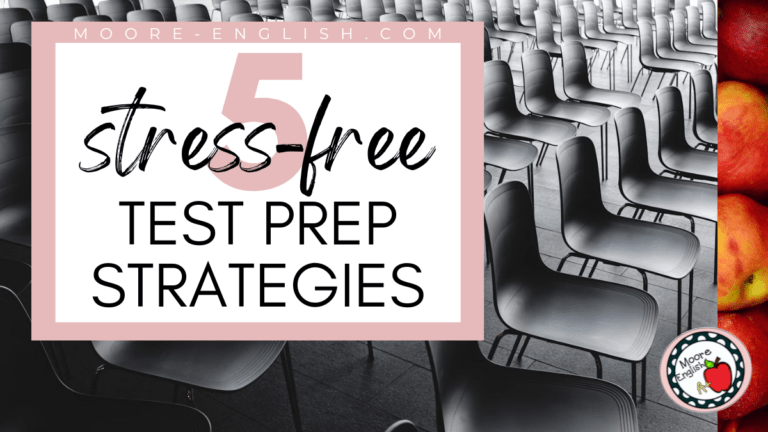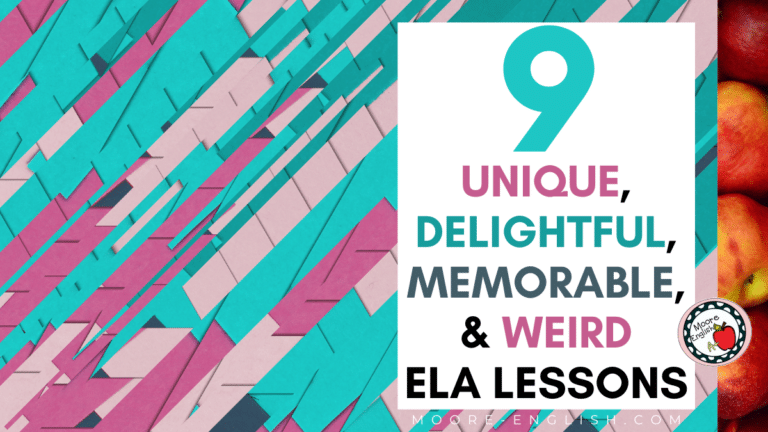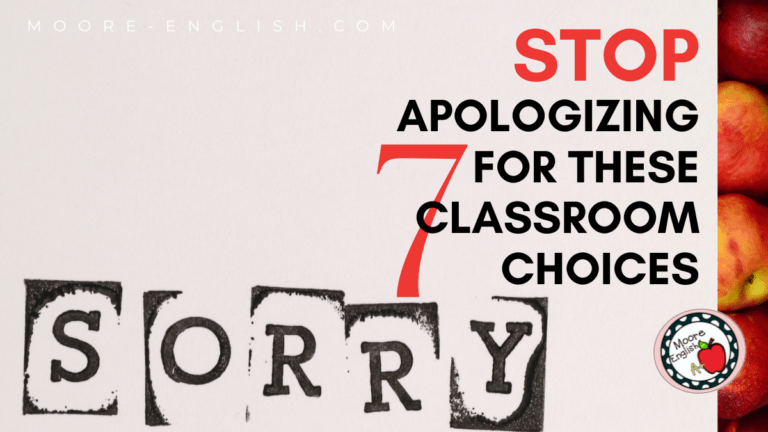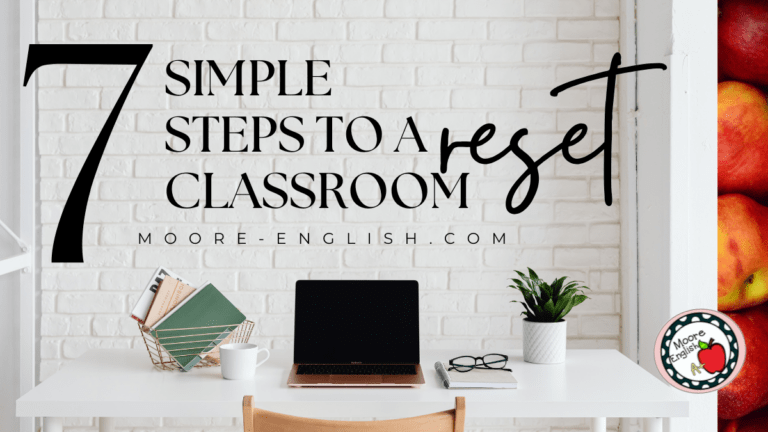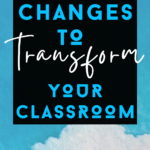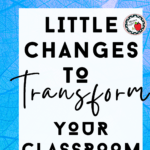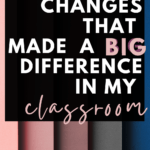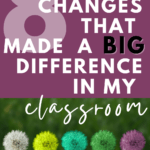When I exercise, I have to be told exactly what to do and for how long. Without the careful guidance of a trainer, I tend to go overboard. I try to do everything, which isn’t manageable or healthy and leads to burn out.
The same is often true in my classroom.
If a lesson flops or a unit feels sluggish, my first instinct is often to overhaul the entire thing. Sometimes that’s the right choice: lessons fail sometimes. As we grow as teachers, it makes sense that our instruction would change.
Sometimes, though, big change is not the right choice.
Sometimes all you need is an adjustment. Tweak this. Trim that.
In the long run, little changes are an important part of continuing to grow as a teacher. Little changes are often more sustainable and manageable.
Today, I want to share 8 little changes that made a big impact in my classroom.
This post this post may contain affiliate links. Please read the Terms of Use.
Improving Classroom Organization
Classroom procedures are such an important part of classroom management. Making little changes to classroom procedures is an easy way to transform a classroom.
To increase student efficacy and absent-work management, I changed the way I handle our classroom daily agenda. Instead of writing the agenda and learning target on the board, I now keep digital daily agendas for each class.
- By posting the agenda on Google Classroom, I’ve made it a lot easier to communicate with absent students.
- For the most part, I favor a week-at-a-glance agenda because that helps students visualize upcoming due dates.
- I also keep the agenda very plain. When the agenda is too busy, it’s overwhelming for the students and for me.
- Because I love this agenda so much, I want to share it with you!
Similarly, I have also gone back to using Google Forms to track parent contacts. For a while, my school was requiring teachers to use the contact log in our learning management system. However, that was not efficient. I just keep this Google Form bookmarked, and I open it each time I make a parent contact. It’s so easy to keep track of everything this way! Grab this Google Form for free!
Little Changes to Increase Engagement
While procedures make the classroom feel predictable and safe, it’s also important to create an engaging classroom environment. With these three little changes, I’ve seen a big pay off in student engagement!
Firstly, in the last year I have really leaned into using anticipation guides. At the beginning of a new unit, I give students an anticipation guide. I give students 3-5 minutes to individually fill out their anticipation guide. Then, students rotate through classroom partners to discuss each statement on the anticipation guide. After students have rotated through several partners, I often ask them to complete a quick exit ticket to record their continuing thinking. Throughout the unit, we will revisit the anticipation guide to see how each statement plays out and how our thoughts evolve. Because I have so enjoyed using anticipation guides, I have put together several free options for common classroom texts:
- Macbeth
- Beowulf
- The Crucible
- Julius Caesar
- The Odyssey
- Things Fall Apart
- Romeo and Juliet
- The Great Gatsby
- Pride and Prejudice
- To Kill a Mockingbird
- The Things They Carried
Similarly, I have also focused on incorporating more informal, low-stress, low-stakes writing. In particular, classroom journals have really paid off! After students finish independent reading, I will offer a journal prompt that asks students to connect their reading to whichever skill(s) we’re working on in class. I always provide an example based on my own writing. These journals have been a great source of formative data. I am able to use them to start conversations with students about their skills. When students share their journals with a peer, they are also building community and practicing speaking and listening skills. Check out all my favorite journal prompts here!
Additionally, providing more scaffolding for pre-reading has paid dividends. By implementing simple four-step processes for pre-reading poetry and informational texts, I have seen my students’ engagement with texts skyrocket! This is one of the little changes I implemented first, and I have spent the last few years making this system stronger. Even after students leave my class, they continue these annotation strategies! Check out the resources I use for teaching pre-reading poetry and informational texts!
Little Changes for Instructional Growth
Little changes in instruction can also make a big impact on student growth! Over the last few years, I have slowly implemented these little changes and have seen growth from my students and from myself!
Firstly, I stopped using P-I-E to teach author’s purpose. I switched to the more nuanced RECEIPT, and this has made a huge difference in my students’ understanding of author’s purpose. At the high school level, students should be discussing author’s purpose in a more nuanced way, and RECEIPT has given them a framework to make that happen! Grab my resources for teaching author’s purpose!
Similarly, I made little changes in how I teach text features. It might be more accurate to say that I simply started teaching text features directly. Rather than assuming that students know about text features, I started building text features into each unit. I chose text-features rich pieces, and I made sure that students studied each text feature while reading. This may be the easiest of the little changes to make because I didn’t have to create anything. I simply had to commit to a change and stick to it! (Because I am a super nerd, I did create this text features concentration game that my students love.)
Finally, the most intensive little changes have come in differentiation and modification. In the last year or so, I have become more and more comfortable making significant modifications to text selections. Oftentimes, this involves abridging a text, which is time-consuming. The Chrome Extension Print Friendly is a huge help in making this process manageable. Save yourself even more time by checking out these texts that I have abridged recently:
- Beowulf
- “Berenice” by Edgar Allan Poe
- “To Build a Fire” by Jack London
- Romeo and Juliet, Julius Caesar, and Macbeth
Bottom Line
Little changes can help teachers transform their classrooms in manageable and sustainable ways. The 8 changes I’ve discussed today have happened over time. Little changes can be implemented slowly and with significant revisions. I don’t want to give the impression that my classroom is a perfect atmosphere, but it is a place where we focus on continual growth. What little changes have helped improve your classroom in big ways?




